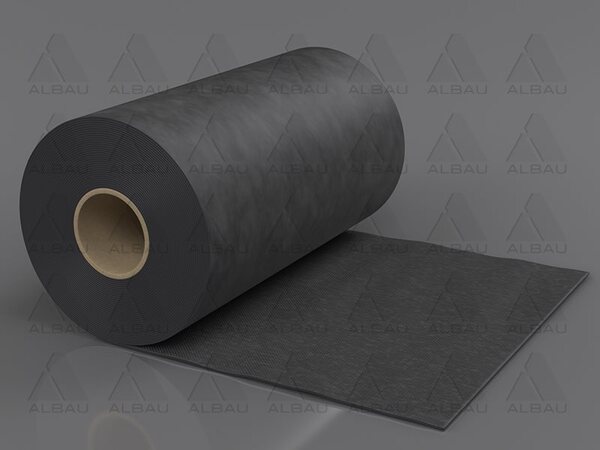EVA / Hidroizoliacinė membrana
| SKU: | |
| EAN: | |
| Prekės ženklas: | Albau |
| Tinka naudoti: | Cavity wall construction |
| Medžiaga: | EVA (ethylene vinyl acetate terpolymer) |
| Ritinio ilgis: | 25 m |
| Storis: | 1,2 mm |
| Root resistance: | acc. to DIN 4062 |
| Temperatūros atsparumas: | -50°C iki +80°C |
| Spalva: | Anthracite / Grey |
Ethylene vinyl acetate terpolymer (EVA) triple-layer, double-sided non-woven fabric waterproofing membrane for cavity wall construction
Advantages:
- Triple-layer, 1,2 mm thick DIN-compliant and bitumen-compatible damp proof course – elastic and watertight. It meets the requirements of DIN EN 14909, DIN V 20.000-202 and DIN 18533
- The double-sided non-woven fabric enables an excellent connection to the masonry mortar, thereby ensuring high shear strength in the masonry
- The membrane boasts extreme tear strength – longitudinal > 600 N / 5 cm to transverse > 450 N / 5 cm.
- only half as heavy at the same thickness as other commercially available 1,2 mm PVC damp proof courses
- Resistant to rising moisture and rot-proof, securely protecting the masonry from the ground up
- Used as a horizontal barrier layer installed in the lowest horizontal joint of the masonry between two mortar layers and can also be used as an L- or Z-barrier in a cavity wall. It can also be used in the area of wall openings, such as window openings, lintels or balustrades
- Easy and efficient to install and is easy to cut from the 25 m long roll
- UV-stabilised and retains its flexibility at all temperatures
- Can be glued with elastic glue for waterproofing membrane (ALB-GLUE-WM/310)
Installation:
- The waterproofing EVA membrane is laid in one layer.
- The surface must be levelled out using Group 2 or 3 mortar acc. to DIN 1053 in order to obtain an even surface
- Then fit the membrane into the horizontal joint between two mortar layers on the base slab
- At the joints, a sufficient overlap of 20 cm must be ensured
- The width of the damp proof course must be selected so that no moisture bridges can form to the side of the bricked-up wall
- As an L-barrier in a cavity wall, the membrane is glued to the rising masonry with elastic glue
- As a Z-barrier in a cavity wall, the membrane is fit into the shell masonry, then later inserted into the facing shell









